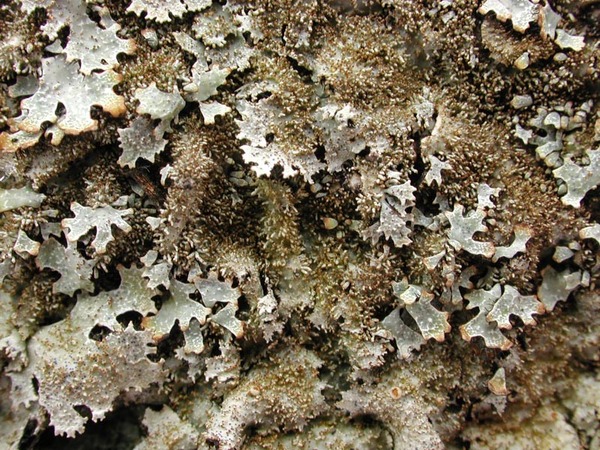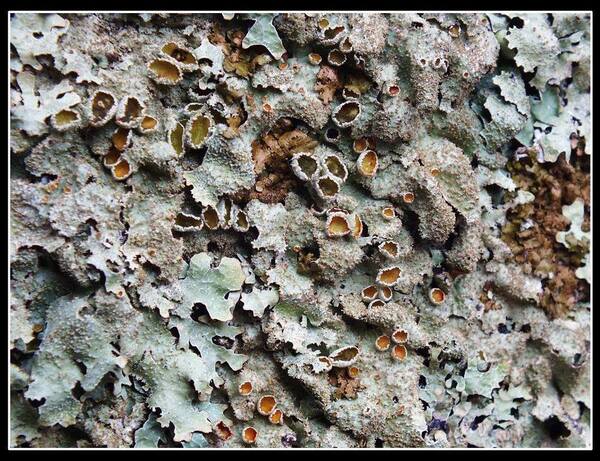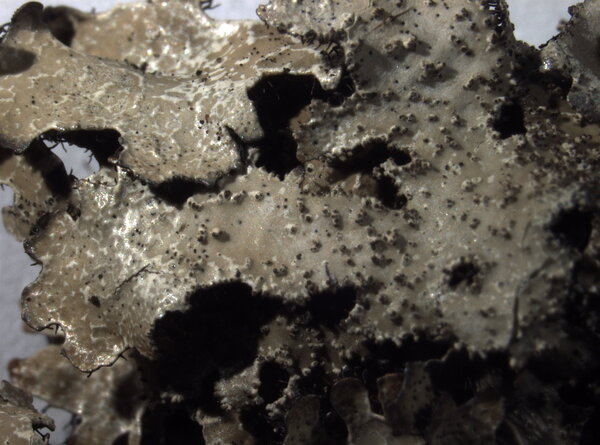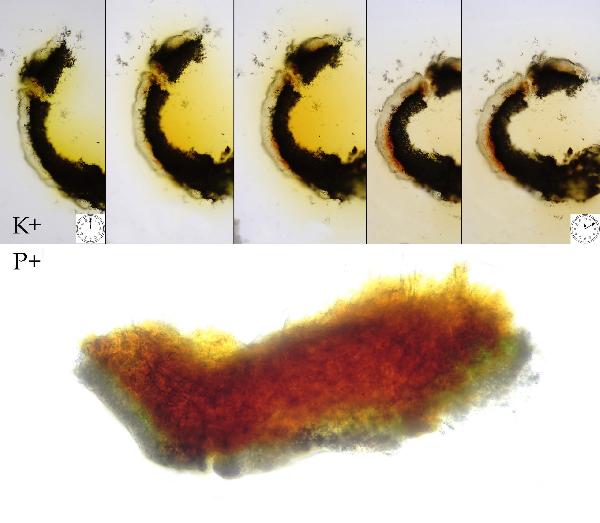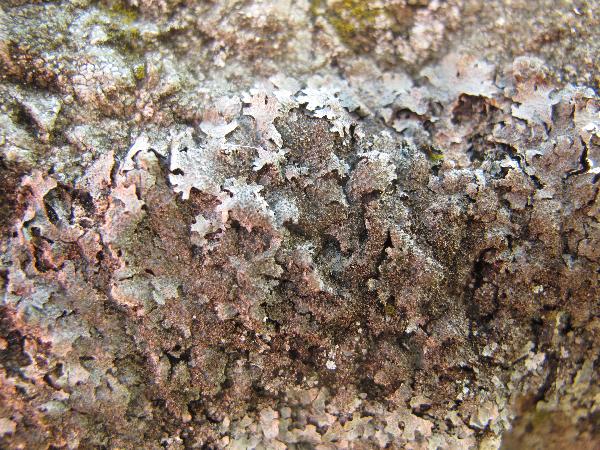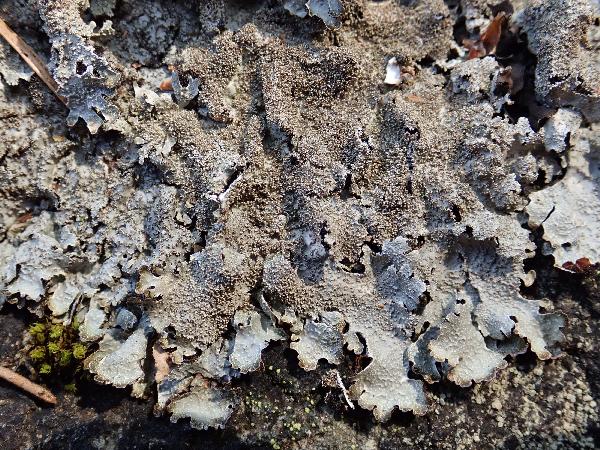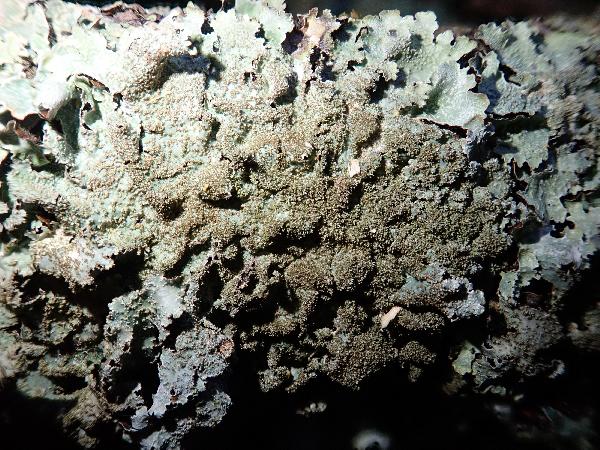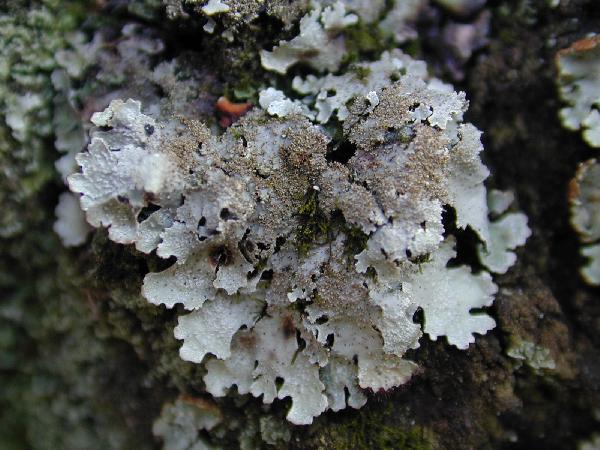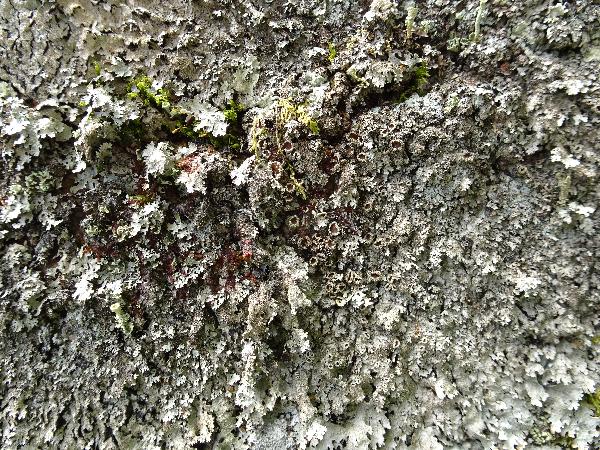Parmelia saxatilis (L.) Ach.
Meth. Lich.: 204, 1803. Basionym: Lichen saxatilis L. - Sp. Pl.: 1142, 1753.
Synonyms: Imbricaria saxatilis (L.) Körb.; Parmelia saxatilis f. rubricosa J. Steiner; Parmelia saxatilis var. laciniata Erichsen; Parmelia saxatilis var. laevis Nyl.; Parmelia saxatilis var. pseudoviridis Gyeln.; Parmelia saxatilis var. retiruga (DC.) Th. Fr.
Distribution: N - VG (Castello 2002, Martellos & Castello 2004, Castello & Skert 2005), Frl (Badin & Nimis 1996, Hafellner 1998, Tretiach & Hafellner 2000, Giordani & al. 2003b, Tretiach & Molaro 2007, Tomasi 2007, Hafellner 2022), Ven (Philippi 1983, Nascimbene & Caniglia 1997, 2000b, 2002c, 2003c, Lazzarin 1997, Caniglia & al. 1999, Nascimbene 2005c, 2008c, 2011, Nascimbene & al. 2005b, 2006, 2006c, 2006e, 2007, 2009c, 2010b, 2013b, Thor & Nascimbene 2007, Nascimbene & Marini 2007, Brackel 2013), TAA (Nascimbene & Caniglia 2000b, 2002c, Caniglia & al. 2002, Nascimbene 2003, 2005b, 2006b, 2006c, 2008b, 2013, 2014, 2014c, Nascimbene & al. 2006e, 2007b, 2008c, 2009, 2010, 2014, 2022, Stofer 2006, Lang 2009, Nascimbene & Marini 2015, Nimis & al. 2015, Trindade & al. 2021, Hafellner 2021), Lomb (Rivellini 1994, Arosio & Rinaldi 1995, Zocchi & al. 1997, Hafellner 1998, Arosio & al. 2003, Valcuvia & al. 2003, Dalle Vedove & al. 2004, Nascimbene & al. 2006e, Brackel 2010, Gheza & al. 2015, 2023, Gheza 2019, 2019b), Piem (Morisi & Sereno 1995, Clerc & al. 1999, Isocrono & Falletti 1999, Isocrono & al. 2003, Piervittori 2003, Morisi 2005, Isocrono & Piervittori 2008, Furlanetto 2010, Matteucci & al. 2010, Favero-Longo & al. 2015, Giordani & Malaspina 2016), VA (Borlandelli & al. 1996, Piervittori & Isocrono 1997, 1999, Ghiraldi 2003, Isocrono & al. 2005, 2006, Matteucci & al. 2008, 2105c, Isocrono & al. 2008, Favero-Longo & Piervittori 2009, Loppi 2014), Emil (Dalle Vedove & al. 2002, Tretiach & al. 2008, Benesperi 2009, Brackel 2015, 2025, Fariselli & al. 2020), Lig (Castello & al. 1994, Brunialti & al. 1999, Putortì & al. 1999b, Giordani & al. 2001, 2002, 2003b, 2025, Brunialti & Giordani 2003, Modenesi & al. 2003, Minganti & al. 2003, Giordani 2006, Brackel 2025). C - Tosc (Tretiach & Nimis 1994, Loppi & Putortì 1995b, Loppi & De Dominicis 1996b, Loppi & al. 1997b, 1999a, Putortì & Loppi 1999, 1999b, Putortì & al. 1999, Tretiach & Ganis 1999, Laganà & al. 2002, 2004c, Baruffo & Tretiach 2005, Benesperi 2006, 2011, Benesperi & al. 2007, Tretiach & al. 2008, Brunialti & Frati 2010, Paoli & al. 2012, Brackel 2015, Nascimbene & al. 2015, Frati & Brunialti 2023), Marc (Nimis & Tretiach 1999, Brackel 2025), Umb (Ravera 1998, Ravera & al. 2006, Panfili 2007), Laz (Ravera 2002, Massari & Ravera 2002, Ravera & Genovesi 2008, Brackel 2015), Abr (Nimis & Tretiach 1999, Stofer 2006, Corona & al. 2016, Gheza & al. 2021), Mol (Nimis & Tretiach 1999, Caporale & al. 2008, Ravera & al. 2010, Genovesi & Ravera 2014, Brackel 2020), Sar (Monte 1993, Zedda 1995, 2002b, Nöske 2000, Loi & al. 2000, Rizzi & al. 2011, Cossu 2013, Neuwirth 2018, Brackel & Berger 2019, Di Nuzzo & al. 2022). S - Camp (Garofalo & al. 1999, 2010, Ricciardi & al. 2000, Aprile & al. 2002, 2003, 2003b, Nimis & Tretiach 2004, Brunialti & al. 2010, 2013, Nascimbene & al. 2010b, Ravera & Brunialti 2013, Catalano & al. 2016), Pugl (Nimis & Tretiach 1999, Brackel 2011), Bas (Nimis & Tretiach 1999, Potenza 2006, Brackel 2011), Cal (Puntillo 1995, 1996, van den Boom & Giralt 2002, Incerti & Nimis 2006, Stofer 2006, Brackel & Puntillo 2016), Si (Czeczuga & al. 1994, 1999, Grillo & al. 1996, 1996b, Ottonello & Romano 1997, Grillo 1998, Poli & Grillo 2000, Merlo 2004, Grillo & Caniglia 2004, 2006, Falco Scampatelli 2005, Stofer 2006, Brackel 2008b, 2008c, Campisi & al. 2020).
Description: Thallus foliose, heteromerous, dorsiventral, rather loosely attached, forming 4-20 cm wide, mostly regular rosettes. Lobes sublinear, contiguous, elongate, separate, flat, 1.5-2.5(-3.5) mm wide, with truncate apices, rarely lobulate. Upper surface grey (to brown in exposed situations and at lobe tips), smooth to foveolate, somehow shiny, rarely slightly white-pruinose in marginal parts, with numerous, mostly apical or marginal, elongate-linear, rarely weakly anastomosing, white pseudocyphellae. Isidia cylindrical, simple to coralloid, often darkened at tips, scattered to clustered but not developing in lines along the pseudocyphellae, mainly laminal and most abundant in central parts of thallus. Lower surface black, with simple to furcate, black rhizines present also along the margins. Upper cortex paraplectenchymatous, of 2-6 layers of densely packed cells, with a usually non-pored epicortex, the cell walls with isolichenan; medulla white; algal layer continuous; lower cortex paraplectenchymatous, thinner than upper cortex. Apothecia rare, lecanorine, 2-8 mm across, with a brown disc and a usually isidiate thalline margin. Epithecium brownish; hymenium and hypothecium colourless. Asci 8-spored, clavate, Lecanora-type. Ascospores 1-celled, ellipsoid, hyaline, (11-)13-15(-18) x 6-8(-11) µm. Pycnidia black. Conidia cylindrical to bacilliform, 5-8 x c. 1 µm. Spot tests: upper cortex K+ yellow (but often slowly turning orange-red due to medullary substances), C-, KC-, P- or P+ faintly yellow; medulla K+ yellow turning orange-red, C-, KC-, P+ orange-red, UV-. Chemistry: upper cortex with atranorin and chloroatranorin; medulla with salazinic acid (major) and consalazinic acid (minor), and often traces of lobaric and protocetraric acids; fatty acids (lichesterinic and protolichesterinic acids) absent. Note: a mainly saxicolous species whose real distribution and ecology in Italy are very poorly known. Many Italian records could refer either to P. ernstiae (especially epiphytic samples), or to P. serrana (especially saxicolous samples). The statement by Castellani & al. (2021) that P. saxatilis is the most widespread species of the complex in Italy is dubious, being merely based on an unreliable morphological analysis of samples, without confirmation by molecular data.
Growth form: Foliose, broad lobed
Substrata: bark and rocks
Photobiont: green algae other than Trentepohlia
Reproductive strategy: mainly asexual, by isidia, or isidia-like structures (e.g. schizidia)
Commonnes-rarity: (info)
Alpine belt: rare
Subalpine belt: rather common
Oromediterranean belt: rather rare
Montane belt: common
Submediterranean belt: rare
Padanian area: absent
Humid submediterranean belt: rather rare
Humid mediterranean belt: extremely rare
Dry mediterranean belt: absent

Predictive model
Herbarium samples
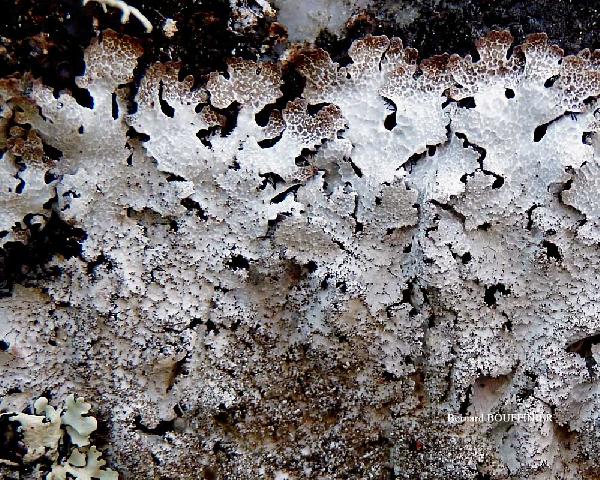
Bernard Bouffinier - Source: http://www.lichensmaritimes.org/index.php?task=fiche&lichen=358&lang=en
France, Lesteven
saxicolous
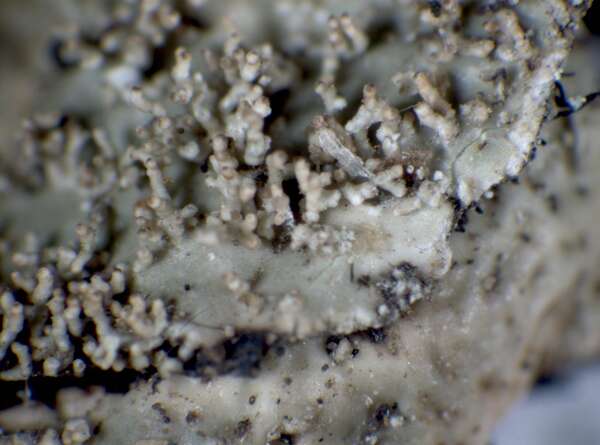

P.L. Nimis; Owner: Department of Life Sciences, University of Trieste
Herbarium: TSB (23059)
2001/12/03
detail of isidia
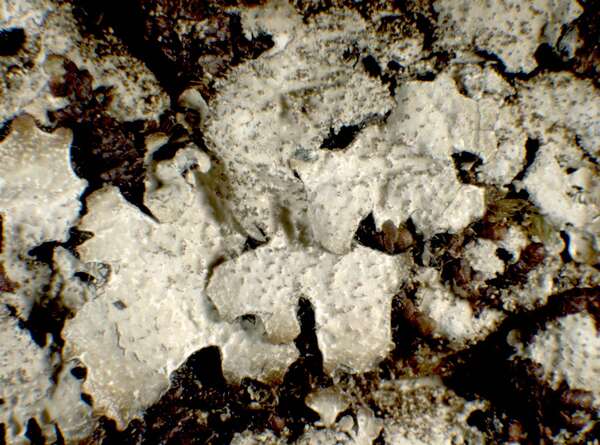

P.L. Nimis; Owner: Department of Life Sciences, University of Trieste
Herbarium: TSB (19666)
2001/12/05
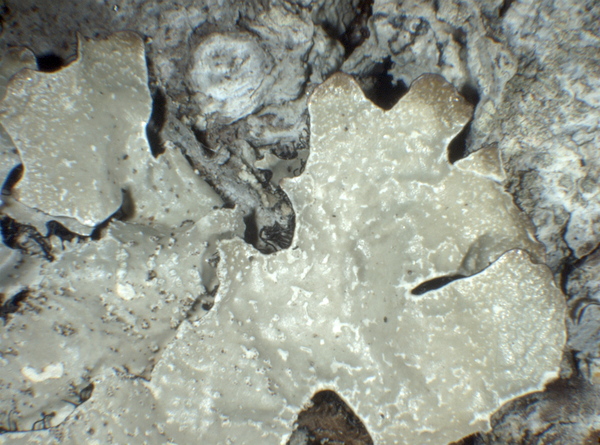

P.L.Nimis; Owner: Department of Life Sciences, University of Trieste
Herbarium: TSB (36795)
2008.02.28
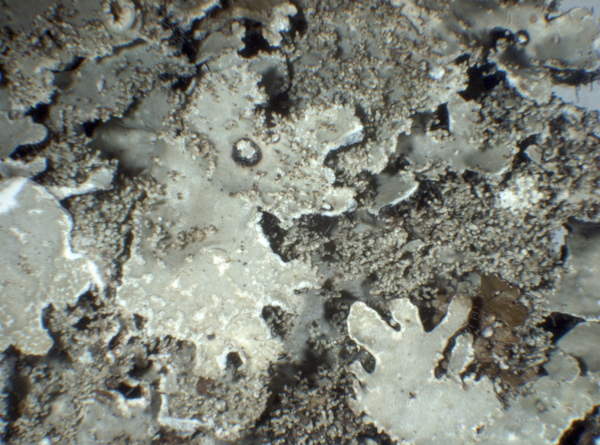

P.L.Nimis; Owner: Department of Life Sciences, University of Trieste
Herbarium: TSB (36795)
2008.02.28
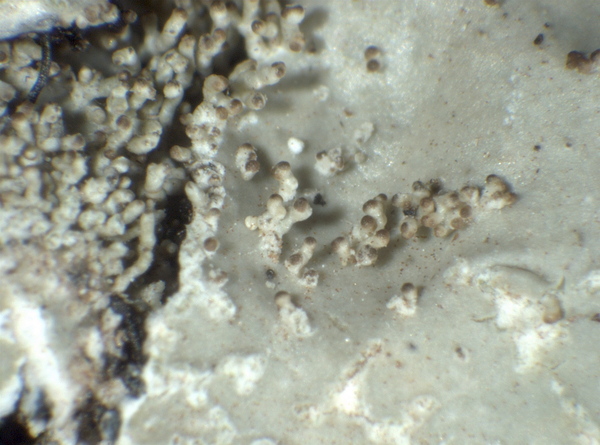

P.L.Nimis; Owner: Department of Life Sciences, University of Trieste
Herbarium: TSB (36795)
2008.02.28
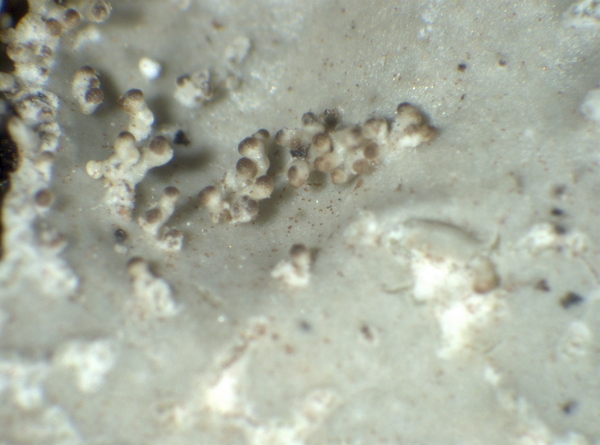

P.L.Nimis; Owner: Department of Life Sciences, University of Trieste
Herbarium: TSB (36795)
2008.02.28
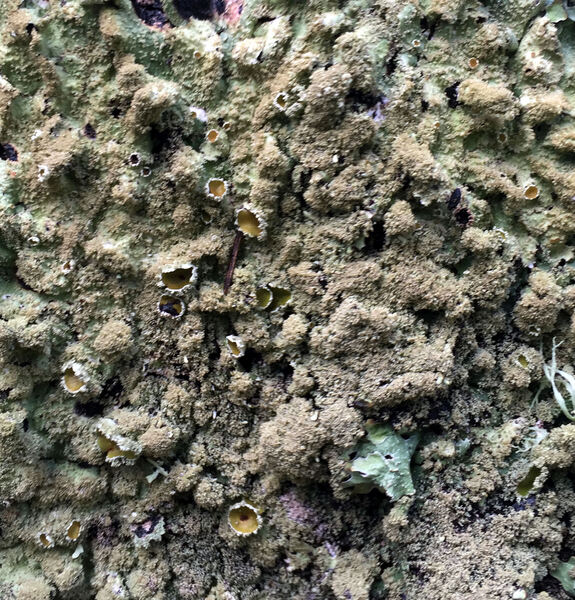

P.L. Nimis; Owner: Department of Life Sciences, University of Trieste
Italy, Friuli Venezia Giulia, Udine, Passo del Pura, Alpi Carniche, 1400 m; altitude: 1400 m
09.09.2016


P.L. Nimis; Owner: Department of Life Sciences, University of Trieste
Italy, Friuli Venezia Giulia, Udine, Ampezzo Carnico, 650 m
09.09.2016

Bernard Bouffinier - Source: http://www.lichensmaritimes.org/index.php?task=fiche&lichen=863&lang=en
France, Kergoat
corticolous
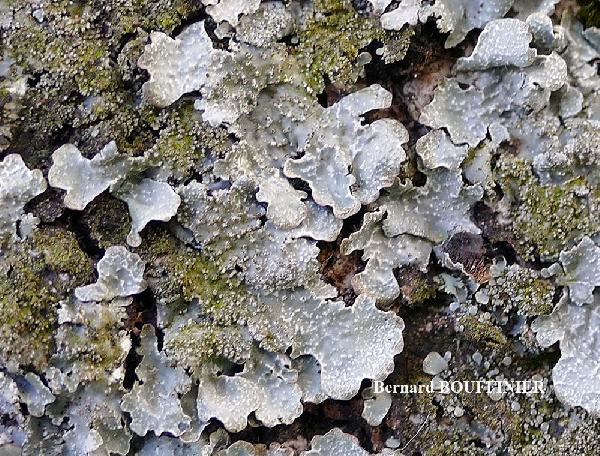
Bernard Bouffinier - Source: http://www.lichensmaritimes.org/index.php?task=fiche&lichen=863&lang=en
France, Kergoat
corticolous
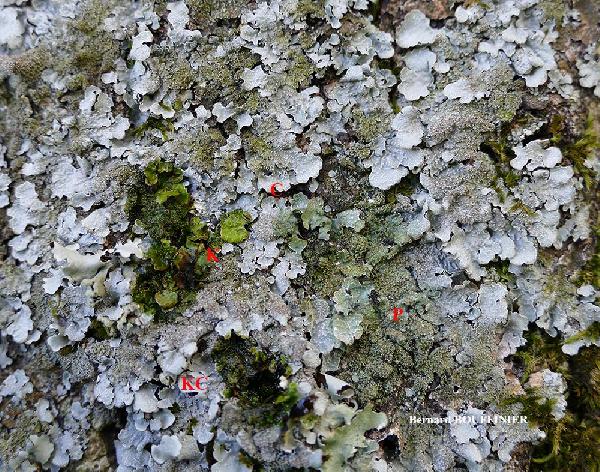
Bernard Bouffinier - Source: http://www.lichensmaritimes.org/index.php?task=fiche&lichen=863&lang=en
France, Kergoat
corticolous

Jacques Haine - Source: http://www.lichensmaritimes.org/index.php?task=fiche&lichen=863&lang=en
France, Ardennes
corticolous

Jacques Haine - Source: http://www.lichensmaritimes.org/index.php?task=fiche&lichen=863&lang=en
France, Ardennes
corticolous
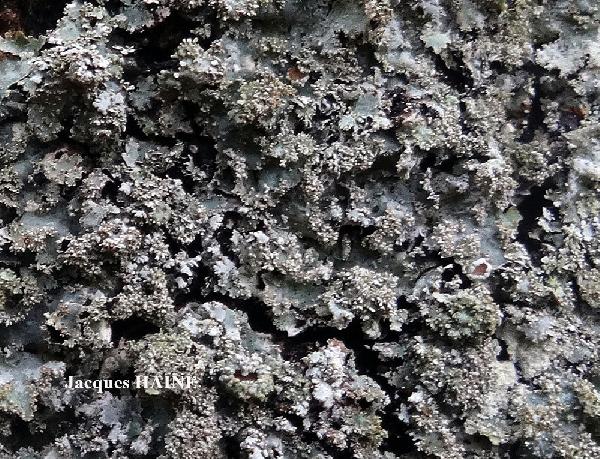
Jacques Haine - Source: http://www.lichensmaritimes.org/index.php?task=fiche&lichen=863&lang=en
France, Ardennes
corticolous
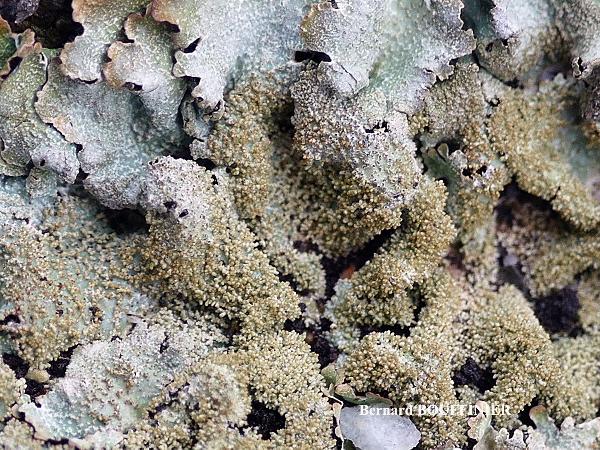
Bernard Bouffinier - Source: http://www.lichensmaritimes.org/index.php?task=fiche&lichen=358&lang=en
France, Camaret
saxicolous
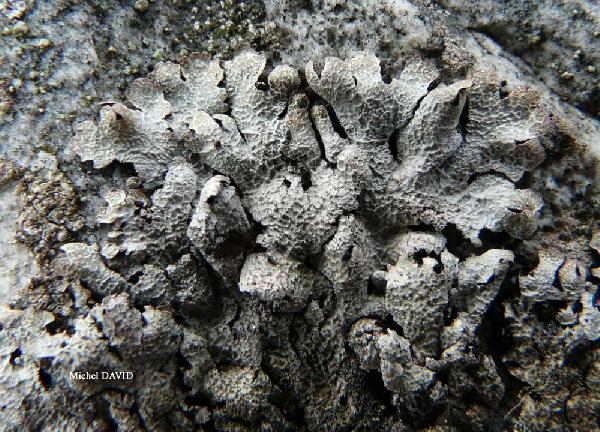
Michel David - Source: http://www.lichensmaritimes.org/index.php?task=fiche&lichen=358&lang=en
France, Pointe de Pen-Hir
saxicolous
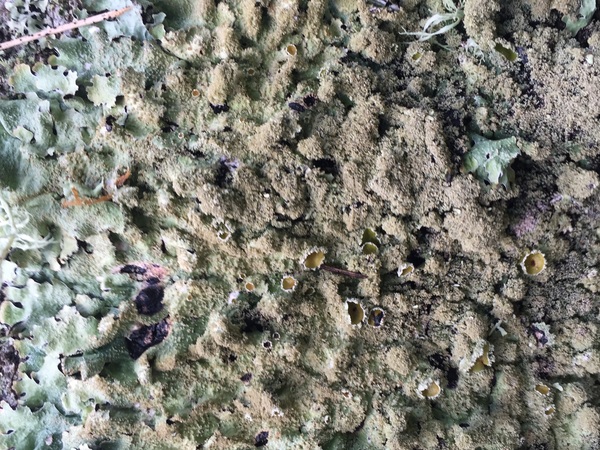

P.L. Nimis; Owner: Department of Life Sciences, University of Trieste
Italy, Friuli Venezia Giulia, Udine, Carnic Alps, Passo Pura (Ampezzo Carnico); altitude: 1470
22.07.2016
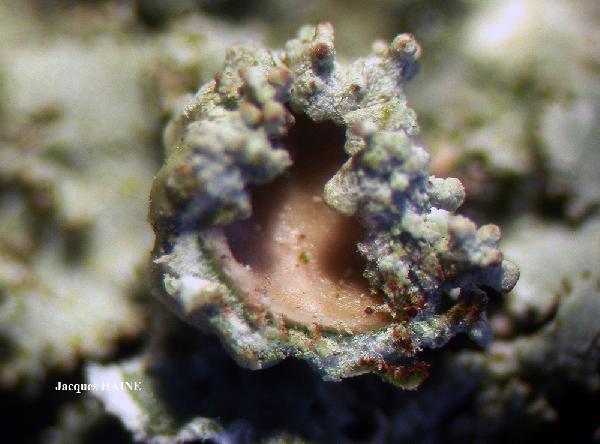
Jacques Haine - Source: http://www.lichensmaritimes.org/index.php?task=fiche&lichen=863&lang=en
France, Ardennes
corticolous
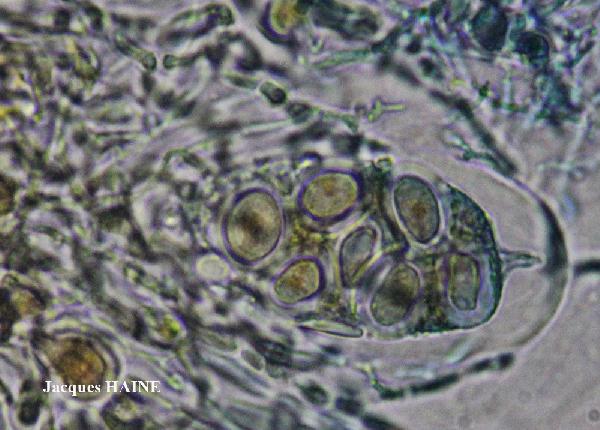
Jacques Haine - Source: http://www.lichensmaritimes.org/index.php?task=fiche&lichen=863&lang=en
France, Ardennes
corticolous
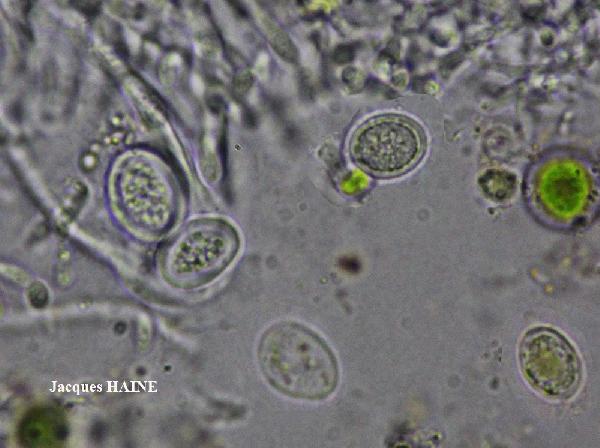
Jacques Haine - Source: http://www.lichensmaritimes.org/index.php?task=fiche&lichen=863&lang=en
France, Ardennes
corticolous
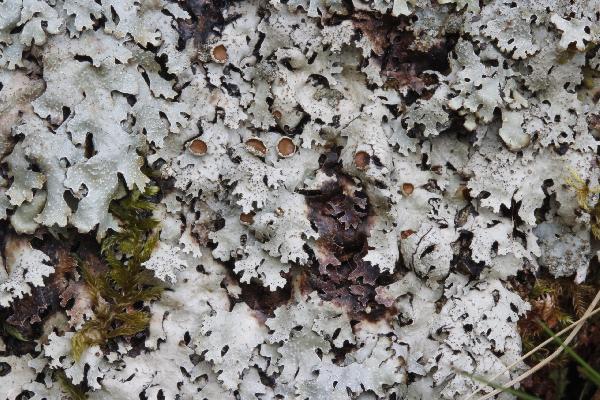
Marta González Garcia - Centro de Estudios Micologicos Asturianos
Spain, Puerto de San Lorenzo (Teverga-Asturias), 15-II-2023, en rocas ácidas.
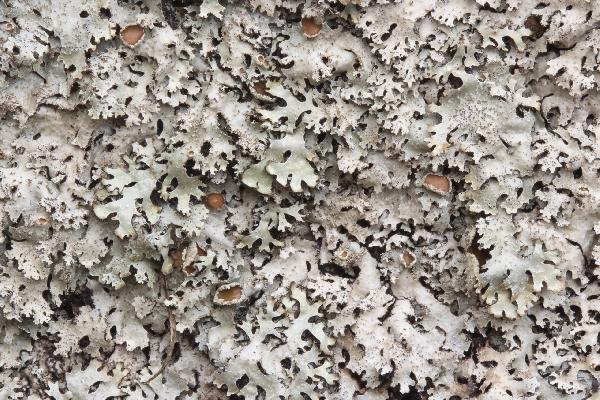
Marta González Garcia - Centro de Estudios Micologicos Asturianos
Spain, Puerto de San Lorenzo (Teverga-Asturias), 15-II-2023, en rocas ácidas.
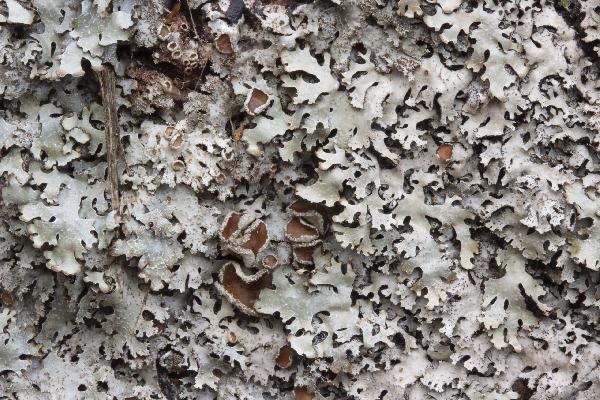
Marta González Garcia - Centro de Estudios Micologicos Asturianos
Spain, Puerto de San Lorenzo (Teverga-Asturias), 15-II-2023, en rocas ácidas.
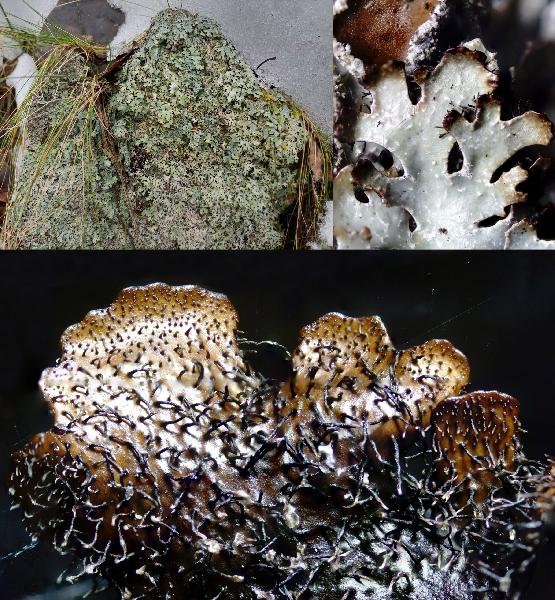
Marta González Garcia - Centro de Estudios Micologicos Asturianos
Spain, Puerto de San Lorenzo (Teverga-Asturias), 15-II-2023, en rocas ácidas.
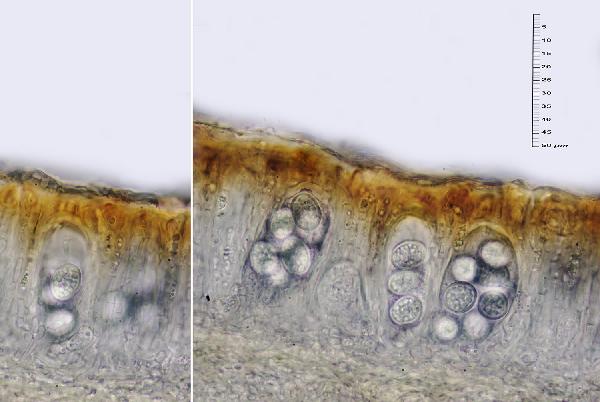
Marta González Garcia - Centro de Estudios Micologicos Asturianos
Spain, Puerto de San Lorenzo (Teverga-Asturias), 15-II-2023, en rocas ácidas.

Marta González Garcia - Centro de Estudios Micologicos Asturianos
Spain, Puerto de San Lorenzo (Teverga-Asturias), 15-II-2023, en rocas ácidas.
Growth form: Foliose, broad lobed
Substrata: bark and rocks
Photobiont: green algae other than Trentepohlia
Reproductive strategy: mainly asexual, by isidia, or isidia-like structures (e.g. schizidia)
Commonnes-rarity: (info)
Alpine belt: rare
Subalpine belt: rather common
Oromediterranean belt: rather rare
Montane belt: common
Submediterranean belt: rare
Padanian area: absent
Humid submediterranean belt: rather rare
Humid mediterranean belt: extremely rare
Dry mediterranean belt: absent

Predictive model
| Herbarium samples |

Bernard Bouffinier - Source: http://www.lichensmaritimes.org/index.php?task=fiche&lichen=358&lang=en
France, Lesteven
saxicolous


P.L. Nimis; Owner: Department of Life Sciences, University of Trieste
Herbarium: TSB (23059)
2001/12/03
detail of isidia


P.L. Nimis; Owner: Department of Life Sciences, University of Trieste
Herbarium: TSB (19666)
2001/12/05


P.L.Nimis; Owner: Department of Life Sciences, University of Trieste
Herbarium: TSB (36795)
2008.02.28


P.L.Nimis; Owner: Department of Life Sciences, University of Trieste
Herbarium: TSB (36795)
2008.02.28


P.L.Nimis; Owner: Department of Life Sciences, University of Trieste
Herbarium: TSB (36795)
2008.02.28


P.L.Nimis; Owner: Department of Life Sciences, University of Trieste
Herbarium: TSB (36795)
2008.02.28


P.L. Nimis; Owner: Department of Life Sciences, University of Trieste
Italy, Friuli Venezia Giulia, Udine, Passo del Pura, Alpi Carniche, 1400 m; altitude: 1400 m
09.09.2016


P.L. Nimis; Owner: Department of Life Sciences, University of Trieste
Italy, Friuli Venezia Giulia, Udine, Ampezzo Carnico, 650 m
09.09.2016

Bernard Bouffinier - Source: http://www.lichensmaritimes.org/index.php?task=fiche&lichen=863&lang=en
France, Kergoat
corticolous

Bernard Bouffinier - Source: http://www.lichensmaritimes.org/index.php?task=fiche&lichen=863&lang=en
France, Kergoat
corticolous

Bernard Bouffinier - Source: http://www.lichensmaritimes.org/index.php?task=fiche&lichen=863&lang=en
France, Kergoat
corticolous

Jacques Haine - Source: http://www.lichensmaritimes.org/index.php?task=fiche&lichen=863&lang=en
France, Ardennes
corticolous

Jacques Haine - Source: http://www.lichensmaritimes.org/index.php?task=fiche&lichen=863&lang=en
France, Ardennes
corticolous

Jacques Haine - Source: http://www.lichensmaritimes.org/index.php?task=fiche&lichen=863&lang=en
France, Ardennes
corticolous

Bernard Bouffinier - Source: http://www.lichensmaritimes.org/index.php?task=fiche&lichen=358&lang=en
France, Camaret
saxicolous

Michel David - Source: http://www.lichensmaritimes.org/index.php?task=fiche&lichen=358&lang=en
France, Pointe de Pen-Hir
saxicolous


P.L. Nimis; Owner: Department of Life Sciences, University of Trieste
Italy, Friuli Venezia Giulia, Udine, Carnic Alps, Passo Pura (Ampezzo Carnico); altitude: 1470
22.07.2016

Jacques Haine - Source: http://www.lichensmaritimes.org/index.php?task=fiche&lichen=863&lang=en
France, Ardennes
corticolous

Jacques Haine - Source: http://www.lichensmaritimes.org/index.php?task=fiche&lichen=863&lang=en
France, Ardennes
corticolous

Jacques Haine - Source: http://www.lichensmaritimes.org/index.php?task=fiche&lichen=863&lang=en
France, Ardennes
corticolous

Marta González Garcia - Centro de Estudios Micologicos Asturianos
Spain, Puerto de San Lorenzo (Teverga-Asturias), 15-II-2023, en rocas ácidas.

Marta González Garcia - Centro de Estudios Micologicos Asturianos
Spain, Puerto de San Lorenzo (Teverga-Asturias), 15-II-2023, en rocas ácidas.

Marta González Garcia - Centro de Estudios Micologicos Asturianos
Spain, Puerto de San Lorenzo (Teverga-Asturias), 15-II-2023, en rocas ácidas.

Marta González Garcia - Centro de Estudios Micologicos Asturianos
Spain, Puerto de San Lorenzo (Teverga-Asturias), 15-II-2023, en rocas ácidas.

Marta González Garcia - Centro de Estudios Micologicos Asturianos
Spain, Puerto de San Lorenzo (Teverga-Asturias), 15-II-2023, en rocas ácidas.

 INDEX FUNGORUM
INDEX FUNGORUM
 GBIF
GBIF
 DOLICHENS
DOLICHENS


